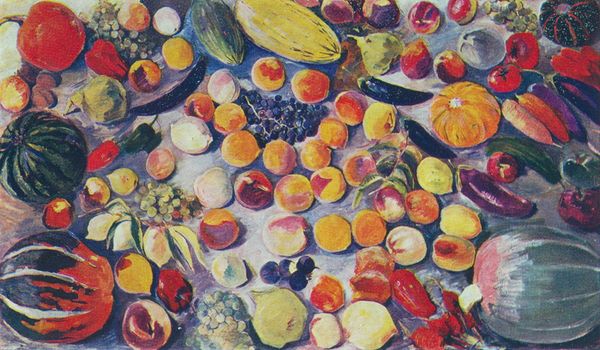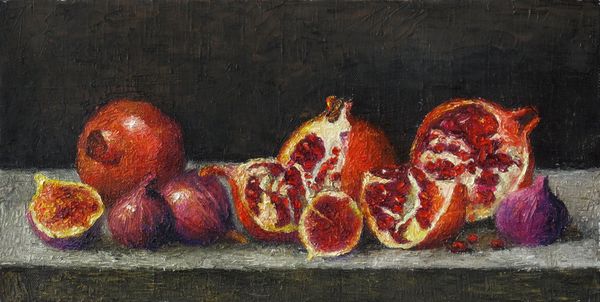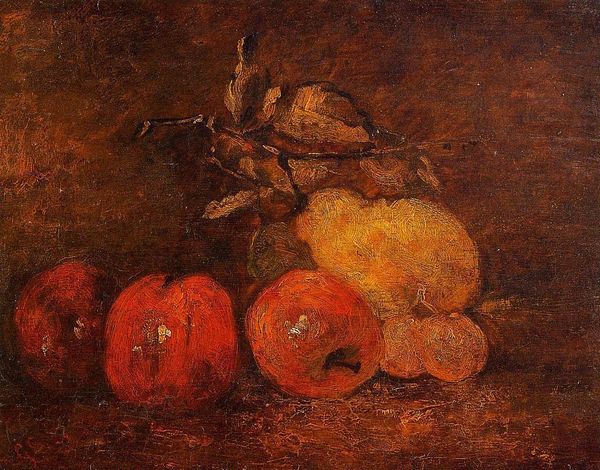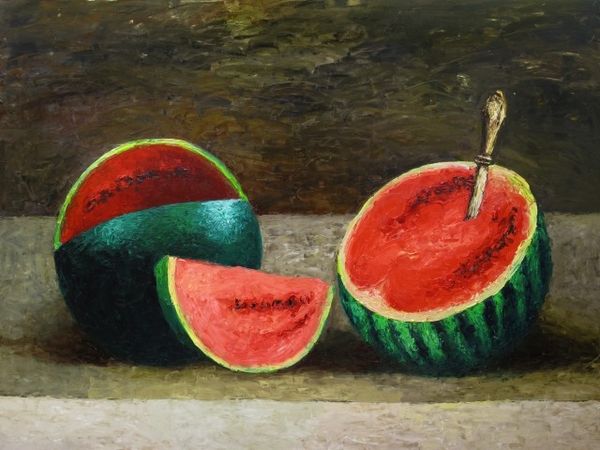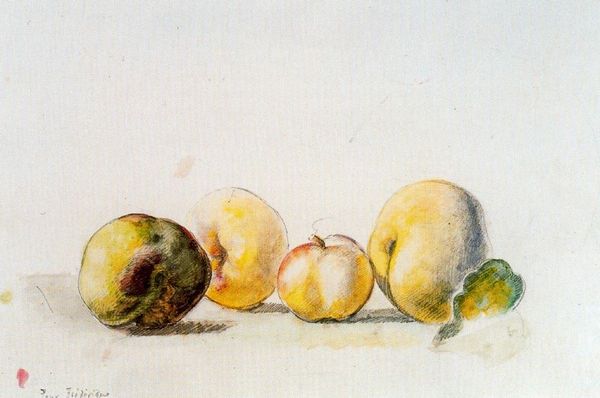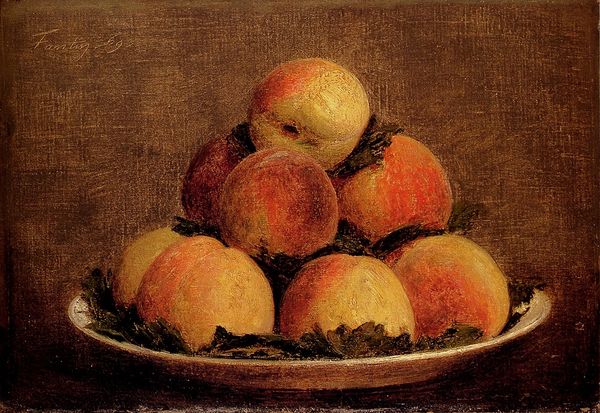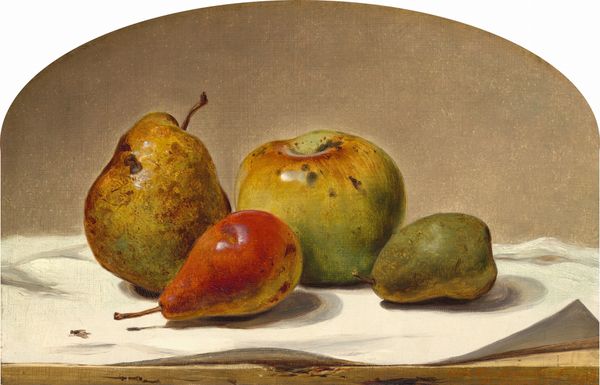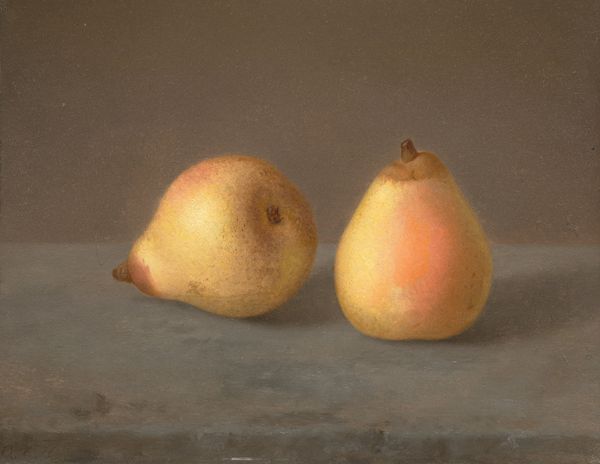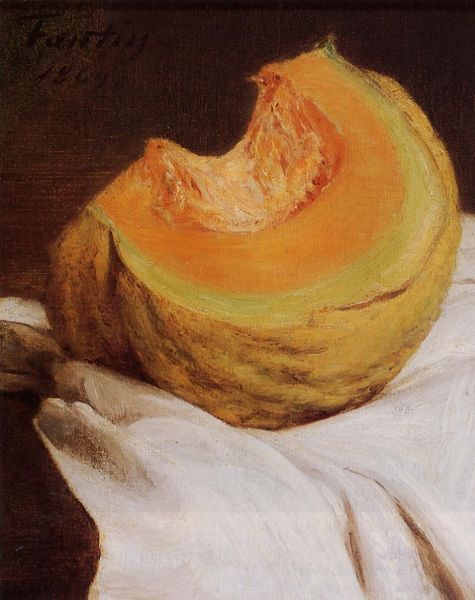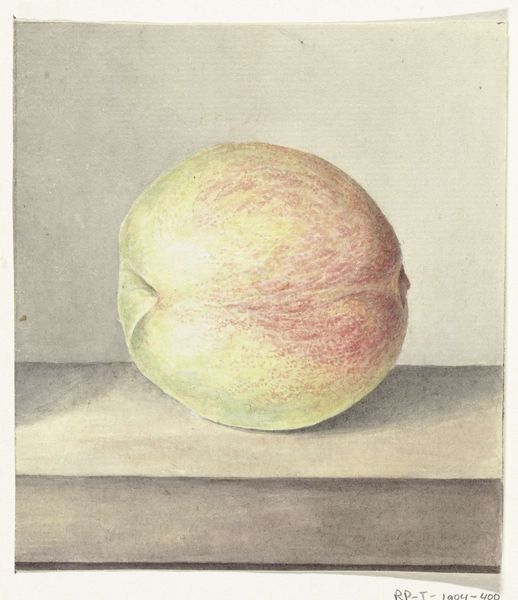
photography
#
still-life
#
eye bird view
#
food
#
winter
#
possibly oil pastel
#
photography
#
oil painting
#
fluid art
#
acrylic on canvas
#
fruit
#
plant
#
animal portrait
#
painting painterly
#
animal drawing portrait
#
watercolor
#
fine art portrait
#
orange
Copyright: Alexander Roitburd,Fair Use
Editor: Here we have Alexander Roitburd’s "Squash," created in 2011. It's a vivid close-up of a halved squash, dominated by oranges and browns. The texture looks quite thick. What stands out to you about the composition of this piece? Curator: Note how the artist has handled the contrast between the smooth exterior and the fibrous interior of the squash. Consider also the seed arrangement: they are not haphazard, but possess a rhythm, echoing the form of the squash itself. Does this considered approach reveal anything about Roitburd’s aesthetic intention, do you think? Editor: It almost feels intentional, designed, maybe less about realism. Are you suggesting the formal arrangement outweighs a purely representational goal? Curator: Precisely. The artist isn't simply depicting a squash. Consider how the earthy palette is juxtaposed with the almost geometric segmentation of the two halves. Think about the line, the shapes, the color. It evokes a sense of organic, divided unity. Observe the tactile quality suggested by the paint handling. Editor: The impasto application does give it a three-dimensional feel, a physicality beyond just being a painting of a squash. Do you think there's an attempt at semiotic significance within this chosen depiction? Curator: It may allude to a visual dissection. What purpose does dissection serve? What might the intent of division expose? Note the darker and more shaded elements of the lower part in relationship to the brighter flesh of the cut squash. In effect, what does the artist imply about how internal structures compare and contrast? Editor: Interesting. I came in just seeing a squash, but I now notice all these contrasts and careful constructions I hadn't spotted. Curator: Yes, close formal readings allows for decoding the intent embedded within.
Comments
No comments
Be the first to comment and join the conversation on the ultimate creative platform.

